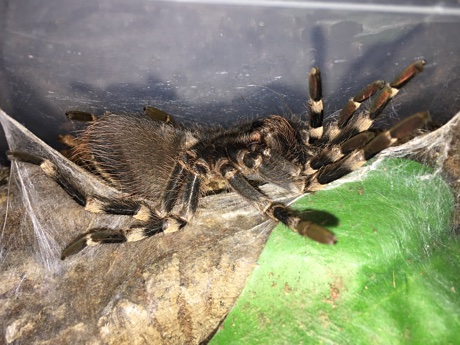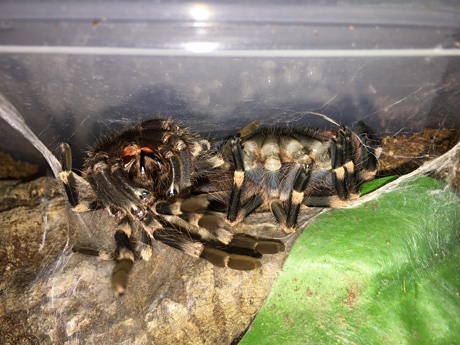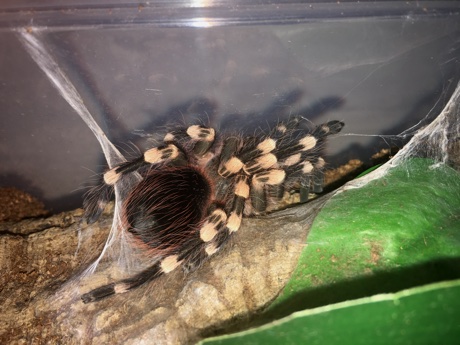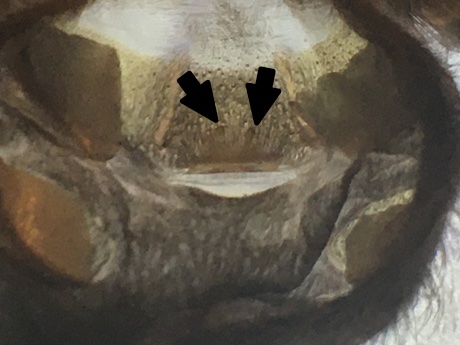Ecdysis of Acanthoscurria geniculata
In the afternoon I noticed that Adam's Acanthoscurria geniculata was upside down. It was about to molt soon. It had webbed a mat on top of its burrow and a plastic leaf the previous night.

The spider had been lethargic for weeks, a possible sign of an upcoming molt (ecdysis).

When I checked again on the tarantula, slightly over 4 hours later, it was resting upside down next to its molt (exuviae). It's best to leave the spider in peace as much as possible during this delicate process.

In the evening I carefully removed the exuviae. This can be used to determine the sex of the tarantula. The tarantula was bought as a female and now I could confirm this by examining the inside of the abdomen between the first pair of book lungs.

In the above photo, taken with an iPhone 6S and macro lens the spermathecae are barely visible. But good enough to confirm that this is indeed a female.
Now the spider has to harden out before it can get its first meal. Best is to wait about 2 weeks.